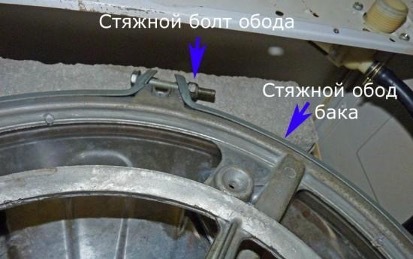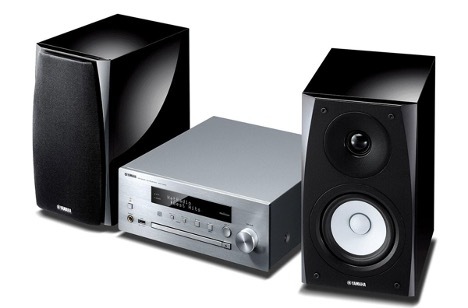Milling cutters are used for processing wood, metal and other materials. There are several types of these tools. Instructions on how to choose a router, and what technical characteristics you need to pay attention to, are described in detail in the article.
The content of the article
-
The main types of devices
- Universal
- Specialized
-
How to choose a router: basic parameters
- Power
- Cutter rotation speed
- working stroke
The main types of devices
First of all, it is necessary to consider what types of milling machines are used today. There are different classifications, but in general they can be divided into 2 groups - universal and specialized.
Universal
If we talk about which manual router to choose, you can first stop at universal models. They are designed to perform all basic work. There are 2 representatives in this group - submersible and edge.
The submersible manual milling cutter for stone and wood is represented by a body in which an engine and a mechanism are installed in 2 guides. The cutting part is directed to the workpiece perpendicularly. With the help of such tools, you can perform several types of work, including the manufacture of a groove, a hole of one form or another. You can make a rounding, create a complex or simple pattern, make a connection or cut.
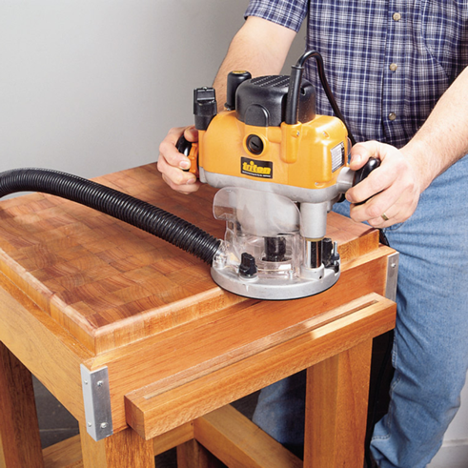
Such a device is also called vertical or rod.
Another option is an edge router for composite and wood. It is easy to operate, can work in a vertical and horizontal plane. The case is small in size, represented by a handle. The depth can be adjusted using the scale. The tool allows you to perform the following operations:
- rounding corners;
- chamfer removal;
- groove selection;
- workpiece fitting;
- surface treatment covered with veneer;
- groove removal.
If we talk about how an edge router differs from a conventional one, first of all - the scope. The first is used around the house and in the workshop, and the second - only for professional purposes. In addition, the edge works both vertically and horizontally, and the usual submersible works only vertically.
Specialized
This group is represented by 3 types of tools - rotary, lamellar and filler. If we describe what a rotary router is, we can say that it is represented by a narrow elongated body, equipped with a rubber insert, which is convenient to hold during operation. The device is designed for forming holes and processing edges on different materials:
- wooden surface;
- different ceramic tiles;
- plastic parts;
- drywall.
There are also lamellar routers. They have horizontal cases, on which the handle with the actuator is fixed. The working surface is represented by a disk cutter located horizontally. It is she who cuts into the surface of the material, due to which lamellae are obtained, that is, oval-shaped plates. It is used as a cutting tool.
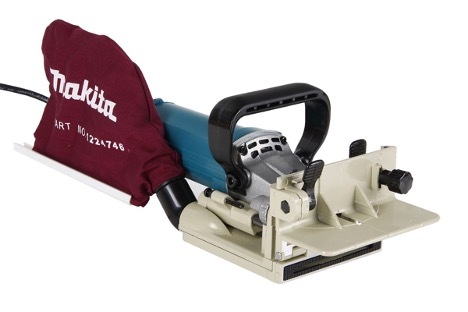
The filler mill is somewhat reminiscent of a lamellar one. But here the tooling function is performed by 2 spiral cutters. The principle of operation is exactly the same. Used to form paired holes that are made at a predetermined, precise distance. Especially often such a device is used in the manufacture of furniture.
How to choose a router: basic parameters
There are different types of manual routers, which differ from each other in the operations performed and technical characteristics. When choosing, you need to pay attention to several parameters described below.
Power
This is the main criterion that you need to pay attention to first of all. According to this indicator, 3 groups of devices are distinguished:
- Lightweight with power ranging from 420 to 750 watts. They weigh 2-3 kg and are quite comfortable to use.
- Medium with a parameter in the range of 800-1450 W, weight up to 5 kg.
- Heavy - the most productive - in the range of 1500-2300 watts. Weight starts from 6 kg.
The power index also determines the largest diameter and length parameter of the cutter. For example, for the manufacture of panel doors, you need a productive device (at least 1800 W). And for processing the edges, a device from the middle group is enough.
Advice
If you need to make a choice between devices with a difference of up to 200 W, it is better to stop at a more powerful device. He only a little heavier, but it can process wood or metal for a long time without interruption.
Cutter rotation speed
On the one hand, it is important to understand the different types of devices, for example, how does an edge router differ from a vertical one. But it is also useful to know about the technical characteristics, for example, the rotation speed of the cutter itself.
It matters just as much as power. The fact is that the speed must be adjusted taking into account the diameter of the cutter and the hardness of the material being processed. For example, with a tool diameter of 10 mm, it is recommended to set 20,000 rpm, and for 40 mm, 10,000 rpm is sufficient.
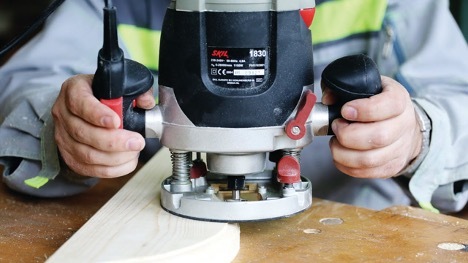
working stroke
Another way to choose a router is to evaluate its working stroke. It characterizes the maximum depth of processing. As a rule, for light devices it is no more than 50 mm, for medium ones it is 50-60 mm, and for heavy devices it reaches 70-80 mm.
Thus, before choosing a tool, it is better to study what milling cutters are and their technical characteristics. Along with the main indicators, you need to take into account additional features, for example, the availability of an option, blocking the spindle, with fixation of the start button, a protective mechanism against involuntary activation and other.
